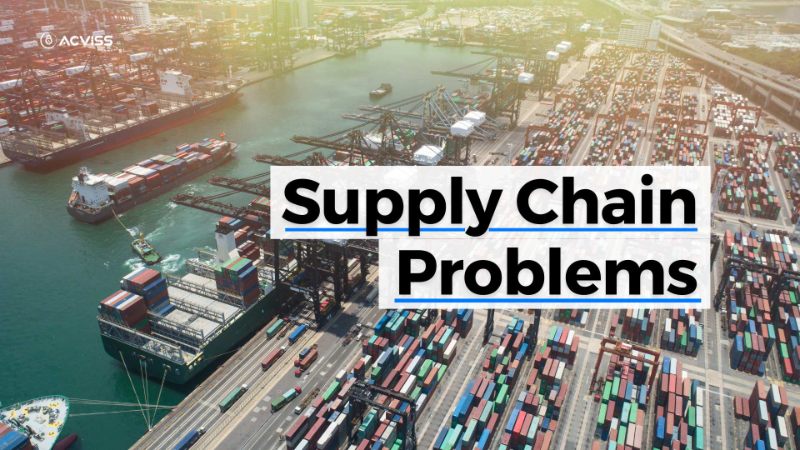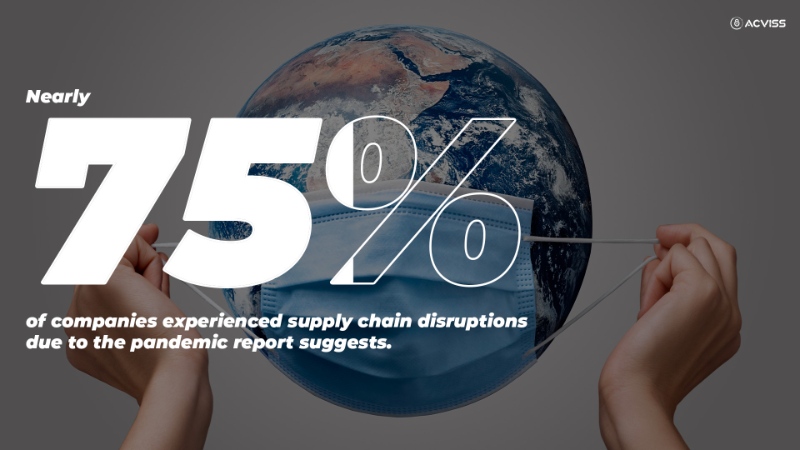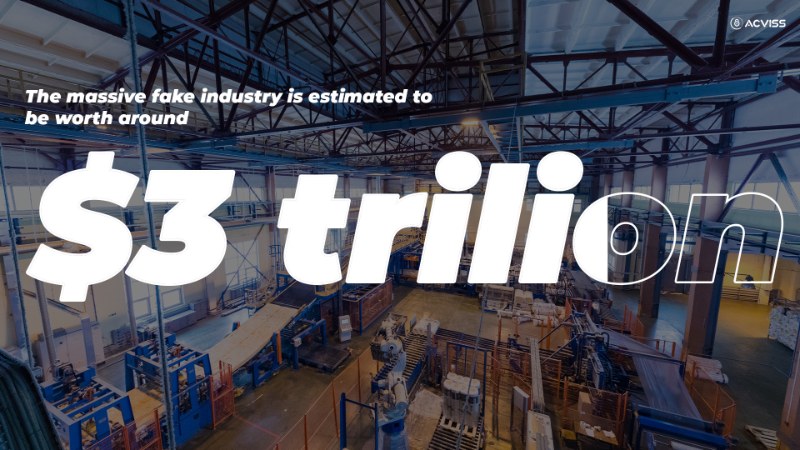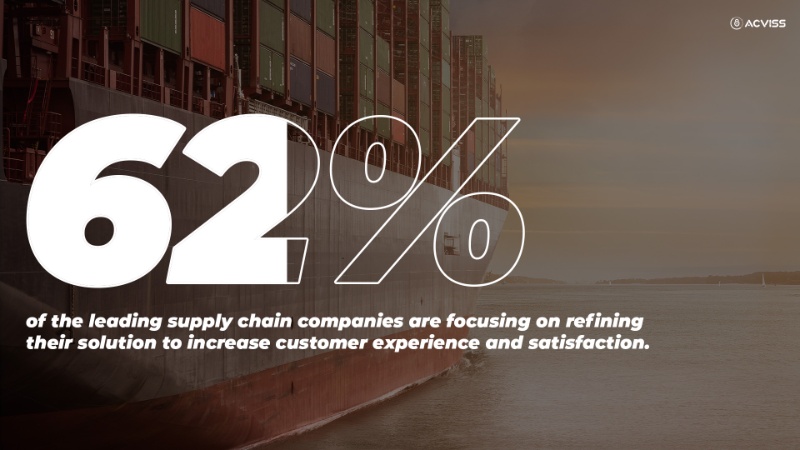Why Do We Still Have Supply Chain Issues?

The Modern Supply Chain Landscape
COVID-19 was not just detrimental to human health but it also shattered the global supply chain management. Ever since– the economy has started to slowly recover, but the issues with the supply chain remain and in fact, have gotten worse. The year 2023 was supposed to be the golden age but it turned out to be far from happening.
It is common to wonder why, even in the era of globalisation and technological advancement, such problems exist within the supply chain. To grasp it better, let's first identify the issues affecting the global supply chain, its complex logistics network and the brand protection field.
Contents
- What are the supply chain issues in 2023?
- 2. Workforce challenges.
- 3. The Pandemic Protocols.
- 4. Customer buying behaviour.
- 5. Counterfeiting Threat
- How to Tackle Supply Chain Issues?
- 1. Demand Forecasting
- 2. Risk Management
- 3. Inventory Expansion
- 4. Integrating Technology
- 5. Diversifying Product Sources
- 6. Supply Chain Digitisation
- Not a Choice But a Necessity!
What are the supply chain issues in 2023?
Supply chains encompass the entire process, from sourcing raw materials to delivering finished products to consumers. Post-pandemic, companies have started to take supply chain relations more seriously than before. Focusing on a customer-centric approach.
So much so that 62% of the leading supply chain companies are focusing on refining their solution to increase customer experience and satisfaction.
However, the past few years have shown the world a series of disruptive events that highlighted the fragility of the networks.
1. Geopolitical Tensions
Uncertainties among external relations have turned out to be a massive problem. Wars, border disputes and political disparities cause disruptions in the supply chain routes. Along with increased Tariffs, trade restrictions and sanctions have forced companies to reconfigure their supply chain strategies, which often involves shifting production locations and finding alternative suppliers.
A survey conducted by SAP finds that 58% of business leaders state geo-political tensions as the reason for supply chain disruptions.
Recently, conflicting interests between Iran and Israel are causing a fuel crisis in the Middle East creating tension in the overall supply chain. Similarly, the Brexit and Russia-Ukraine war has also played an immense part in the disarray. Added the flight restrictions across European terrain created an even greater challenge in reconstructing the existing chain after the pandemic.

2. Workforce challenges.
One of the most pressing challenges faced by supply chains is the ongoing skilled labour shortage. The pandemic led to the resignation of millions of workers, who either sought remote work or changed career paths. This shortage affected various industries, from trucking and warehousing to manufacturing and retail.
Moreover, the contrast and expectations of younger and older generations in the workforce are getting higher. The supply chain sector also often struggles to attract potential talent due to the misconception that it is not a lucrative career path.
Younger employees increasingly prioritize a healthy work-life balance, which adds complexity to workforce management.
The U.S. Bureau of Labor Statistics reported a record-high number of job openings across various sectors, indicating the severity of the issue. The shortage of skilled labour has led to difficulties in meeting production targets, managing inventories and ensuring timely deliveries.
3. The Pandemic Protocols.
The COVID-19 pandemic exposed the vulnerabilities of modern supply chains like never before. Lockdowns, factory closures and transportation restrictions disrupted the flow of goods, leading to widespread shortages and delays.
Nearly 75% of companies experienced supply chain disruptions due to the pandemic report suggests.
While the pandemic's initial impact is gradually waning, its effects still linger, with companies struggling to adapt to the "new normal." Social distancing, health and safety protocols and remote work have transformed how businesses operate, making it difficult to predict and plan for future disruptions.

4. Customer buying behaviour.
Ever since the pandemic, there has been a drastic shift in the customer’s shopping pattern. People have started to spend more time on social media platforms, with an increase of 20%since 2019. This exposed the customers to the world of online shopping, which became popular during the period.
However, this new avenue has made the supply chain even more complicated. Customers began to prefer Quick and timely delivery of products and started to prioritise comfort over cost. Added to the novelty of the platforms and the supply chain complexities, constant and recurring mishaps are turning out to be detrimental to the overall online marketplace and customer experience.
5. Counterfeiting Threat
While global disruptions have garnered significant attention, counterfeiting remains a silent menace within supply chains. Counterfeiting thrives on the vulnerabilities of modern supply chains. These fakes infiltrate supply chains, threatening the bottom line and consumer safety. The sprawling networks that source materials and products from multiple locations worldwide make it challenging to trace the origin or authenticate products.
The massive fake industry is estimated to be worth around $3 trillion annually.
Plus, the rise of e-commerce and the proliferation of online marketplaces have created new avenues for counterfeiters to peddle their goods. E-commerce platforms often struggle to monitor and regulate their vast seller ecosystems effectively.

How to Tackle Supply Chain Issues?
1. Demand Forecasting
Half the supply chain challenges can be solved if companies start prioritising demand forecasting. Leverage advanced analytics and data-driven forecasting models to get a deeper understanding of market behaviour.
Empowering to make well-informed decisions regarding production, optimal inventory levels and efficient resource allocation.
2. Risk Management
It's crucial to continuously assess potential vulnerabilities in the supply chain to mitigate the losses.
Identify the weak links before they escalate into major problems.
It's equally important to have well-thought-out contingency plans in place for various scenarios. These plans should serve as a roadmap to navigate through unforeseen challenges.
Whether it's a backup supplier, a disaster recovery strategy or a well-defined action plan for various risk scenarios, having contingencies in place can be a game-changer when the unexpected occurs.
3. Inventory Expansion
Holding more inventory has become a cornerstone of supply chain resilience. Having extra stock readily available can significantly enhance the ability to meet customer demands.
However, this isn't a one-size-fits-all solution. Constant research is key to making inventory expansion work.
Start by identifying the optimal stock levels for specific businesses. It's crucial to strike a balance between having enough products on hand to meet customer needs and not overstocking, which can inflate storage costs. Leveraging data forecasting can be a game-changer in this regard. This can be done by analyzing market trends and customer preferences and making informed decisions about inventory levels.

4. Integrating Technology
Harness the power of data to gain insights into the supply chain. Advanced analytics can help forecast demand, identify bottlenecks and optimize inventory levels. Artificial Intelligence has the capability for dynamic forecasting and automation of physical flow.
Companies that use AI for supply chain management have reduced costs by 15-20%.
Blockchain-induced supply chain allows brands to get end-to-end transparency. By embedding labels in products, containers and vehicles, businesses can monitor real-time conditions and performance.
Track and Trace technologies like Origin increase transparency and visibility in the product lifecycle and help in predictive maintenance and route optimization, ensuring timely deliveries.
5. Diversifying Product Sources
The adage Don't put all your eggs in one basket provides the exact illustration in the context of supply chain disruptions.
Relying solely on a limited set of product sources can leave the business vulnerable to unforeseen hiccups in the supply chain. It's essential to diversify the product sources to guard against such vulnerabilities.
Rather than depending on a small number of suppliers, explore alternative sourcing options. Thus creating a safety net that ensures a consistent flow of products even when one source faces disruptions. This strategic diversification not only minimizes risks but also allows businesses to adapt more effectively to changing market demands.
6. Supply Chain Digitisation
The transformation of supply chain processes into a digital landscape provides an effective way to combat challenges related to delivery and operational costs. Digitisation can improve visibility, communication and collaboration in the supply chain.
This empowers businesses with real-time tracking, seamless data sharing and swift responsiveness to dynamic changes in the landscape.
These cutting-edge technologies play a pivotal role in streamlining operations and significantly reducing occurrences of manual error.

Not a Choice But a Necessity!
Supply chain management is undeniably a complex and intricate web of processes, involving a multitude of stakeholders and countless moving parts. The integration of new technology promises enhanced efficiency, but it also presents the risk of investing in the wrong tools which can complicate productivity and impact profitability, leading to various issues within the supply chain. The complexities of modern supply chains, coupled with the interference of counterfeiters, necessitate a proactive and collaborative response.
Addressing supply chain issues and combating counterfeiting is not a choice but a necessity for the future of the global economy.
However, it's crucial to remember that the advantages of effective supply chain management are manifold, making it a top priority for professionals in this field to overcome the associated challenges and ensure the seamless operation of their supply chains.
Reach out to us to understand more about the complexities and challenges of your supply chain and the possible solutions you could take to tackle them today.